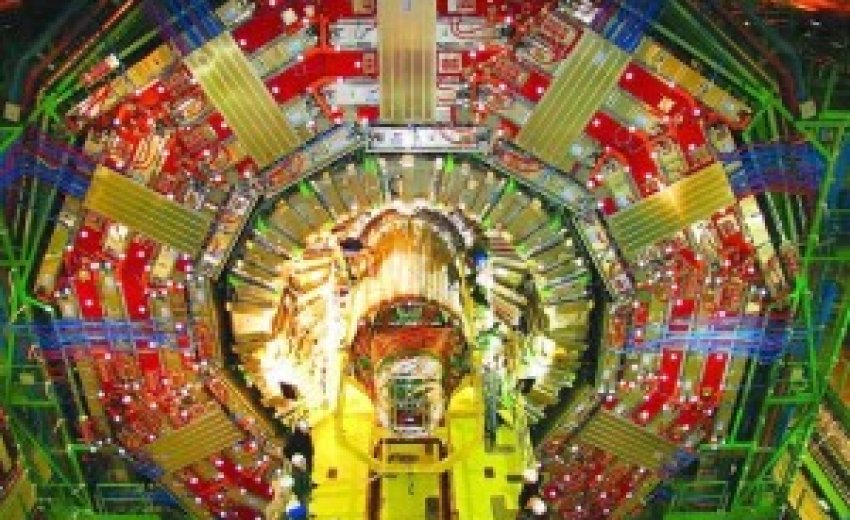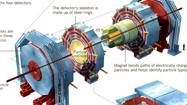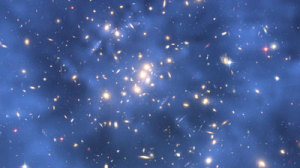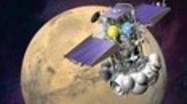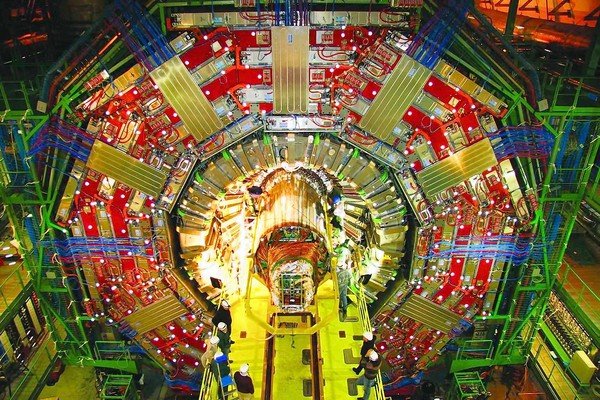
A particle detector used by the CMS team at CERN's Large Hadron Collider. (Michael Hoch, CERN /December 9, 2011)
Scientists eagerly await data that may prove the existence of the Higgs boson, which is key to understanding mass in the universe. Or the hints may be a false alarm. Scientists are quivering with anticipation — flying halfway around the world for a close-up view of the action and devouring the latest updates from the blogosphere the way some girls track the doings of Justin Bieber. Careers hang in the balance. Not to mention a cache of chocolate handed out by the folks who award Nobel Prizes. All the fuss is over an elusive subatomic particle called the Higgs boson, which is key to understanding mass in the universe. No one has ever presented proof of its existence, but that may be about to change. FOR THE RECORD: Higgs boson search: In some copies of the Dec. 9 Section A, a headline accompanying an article about the search for a mysterious subatomic particle ("Data suggest that the crucial, long-hunted subatomic particle may have been found") implied that results from the search had already been released. As the article noted, preliminary results are not expected until next week. In the final version, the headline reads, "Scientists await data that may prove the long-hunted 'God particle' exists." — "There will be people who will see years of work and things for which they got tenure consigned to the dustbin of history," said MIT theoretical physicist and Nobel laureate Frank Wilczek, who believes that the particle's days of anonymity are numbered. Hundreds of researchers are sifting through data from CERN's Large Hadron Collider outside Geneva, which sends beams of protons hurtling toward one another at nearly the speed of light. They are hoping that some of the collisions produced telltale tracks of the Higgs boson — and thus provide a key piece of experimental confirmation of the Standard Model of particle physics, which describes how subatomic particles interact to form the basic building blocks of the universe. Teams at CERN, the European Organization for Nuclear Research, will make a preliminary announcement about their search next week. Scientists expect to get a general indication of whether the Higgs is what they think it is — or not. The Higgs boson lies at the heart of a fundamental question: Why is there mass in the universe? Physicist Peter Higgs of the University of Edinburgh and other theorists came up with a possible answer 47 years ago, suggesting that particles gain mass by traveling through a particular type of energy field. It came to be known as the Higgs field; the process by which mass is created, the Higgs mechanism. There also had to be a particle associated with the field: the Higgs boson. Ferreting out the Higgs — which has earned the nickname "God particle" — had been beyond the capabilities of the world's atom smashers. That was a major reason why CERN built the $5-billion Large Hadron Collider, a 17-mile loop buried nearly 600 feet underground. Scientists think they know what the tracks of the Higgs should look like. Once formed, the Higgs decays almost instantaneously into other subatomic particles that physicists can spot at the collider. The tricky part is figuring out whether the tracks really are evidence of a Higgs boson — or just unrelated noise. "You have to determine that it is the Higgs bomb and not some shrapnel from the background," said Vivek Sharma, a UC San Diego physicist who heads up one of the two search teams at CERN. To tell the difference, he added, requires painstaking analysis of data from trillions of collisions. Just getting to the point where that work became possible has been a tall order, and some physicists are more than a little impatient. "It slowly drives you crazy," said UC Davis theoretical physicist John Gunion, who began work on his textbook, "The Higgs Hunter's Guide," in 1983. "You wonder, am I going to be dead before they find this damn thing?" Leon Lederman, who coined the term "God particle" in a 1993 book of the same name, wrote that he had really wanted to call it the "Goddamn Particle," but his publisher wouldn't let him. He knows a thing or two about finding subatomic particles — he won the Nobel Prize with two others in 1988 for discovering subatomic particles known as the muon neutrino and the bottom quark. The LHC began its Higgs-hunting experiments in 2010. It has been unexpectedly productive this year, generating 400 trillion proton-proton collisions, almost six times more than expected. The more collisions scientists can study, the more confident they can be that their results are statistically sound. At a scientific meeting this summer in France, researchers from Sharma's team, known by the acronym CMS, and a rival group, known as ATLAS, presented early results. Both groups had seen hints of the particle, fueling speculation that the search was coming to an end. But a month later, CERN physicists at a meeting in Mumbai, India, reported that the Higgs signals were getting weaker, setting off another flurry of excitement — this time focused on the possibility that the Higgs did not exist after all. Now the pendulum has swung back: This week, rumor had it that the Higgs signals had strengthened again. The allure of the Higgs has spread beyond scientists. When Sharma gave a speech at UC San Diego about the Higgs search in January, more than 400 people — including elementary school children, engineers from nearby tech companies and retirees — showed up at the auditorium, which seated only about 200. The dean of physical sciences couldn't find a seat. But no one is more excited than physicists. "We have hundreds of people literally working day and night," said Guido Tonelli, the Italian physicist who serves as CMS spokesman. "It is one of the most exciting moments in my lifetime." Gunion, who doesn't work directly on the experiments, made a two-week pilgrimage to CERN this fall to see the goings-on with his own eyes. "One wants to be where the action is," he said. "We've all been fooling around with all these ideas for many years now. What we really want is an answer." For those who can't travel to Geneva, the Web is the place to track the Higgs search. CMS and ATLAS upload public results to their home pages and the physics website arXiv. Researchers post talks and PowerPoint slides. Blogs attempt to demystify the data as they trickle out. Peter Woit, a senior lecturer in mathematics at Columbia University in New York, is the author of the particle physics blog Not Even Wrong. He created a frenzy in April when he published an internal communication from the ATLAS team suggesting that it had detected the Higgs. (ATLAS later released data showing that it had not.) "I'm writing the blog for other people who are obsessed," he said. If the particle doesn't materialize in the LHC data, it wouldn't necessarily mean the entire Standard Model is wrong. But it would mean that physicists would have to imagine a different sort of Higgs — or a combination of many different Higgses. They'd also have to figure out how to use the LHC to look for them. Woit said he would prefer to see the Higgs remain elusive. "The depressing thing would be if we found the Higgs and it's doing exactly what it's supposed to do," he said. "Then life will be really boring." Wilczek, on the other hand, would like to see the latest rumors — that CERN scientists are about to report strong but not definitive indications for the existence of the Higgs — prove true. Back in 2005, he and MIT colleague Janet Conrad, an experimental physicist, made a friendly wager: If the Higgs is found, Conrad has to give Wilczek ten of the chocolate coins that are served at Nobel Prize award ceremonies in Stockholm; if the Higgs remains hidden, Wilczek has to give Conrad 100 chocolates. The stakes reflect Wilczek's confidence in the Higgs. "It's just a matter of letting the accelerator run long enough," he said. Sharma said he was just looking forward to a resolution either way so he could stop commuting between Geneva and San Diego. "I could care less if Higgs exists or not," he added. "It's a crime scene for me. I'm searching for something. If it exists, we'll find it. If not, we won't." Copyright © 2011, Los Angeles Times |

